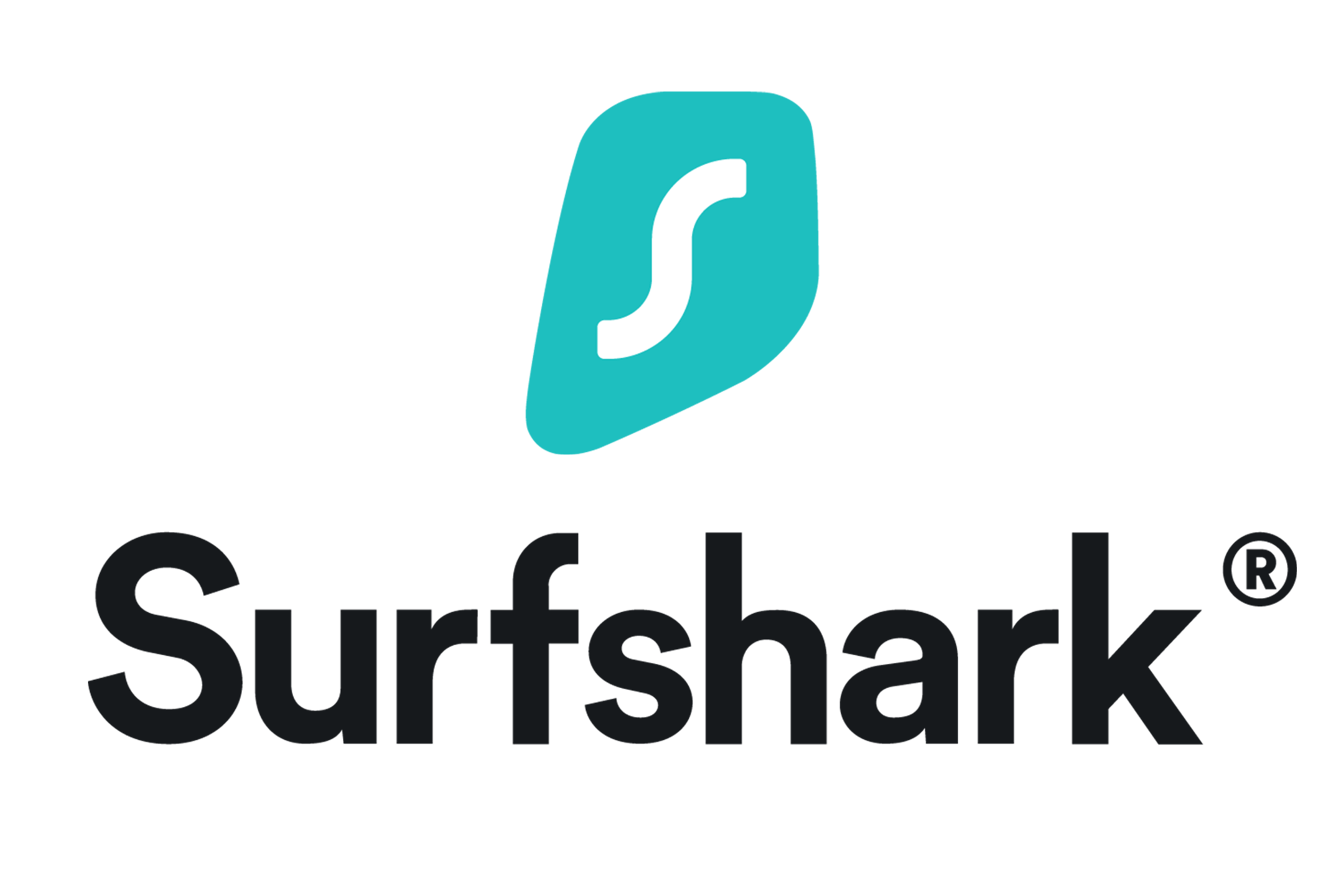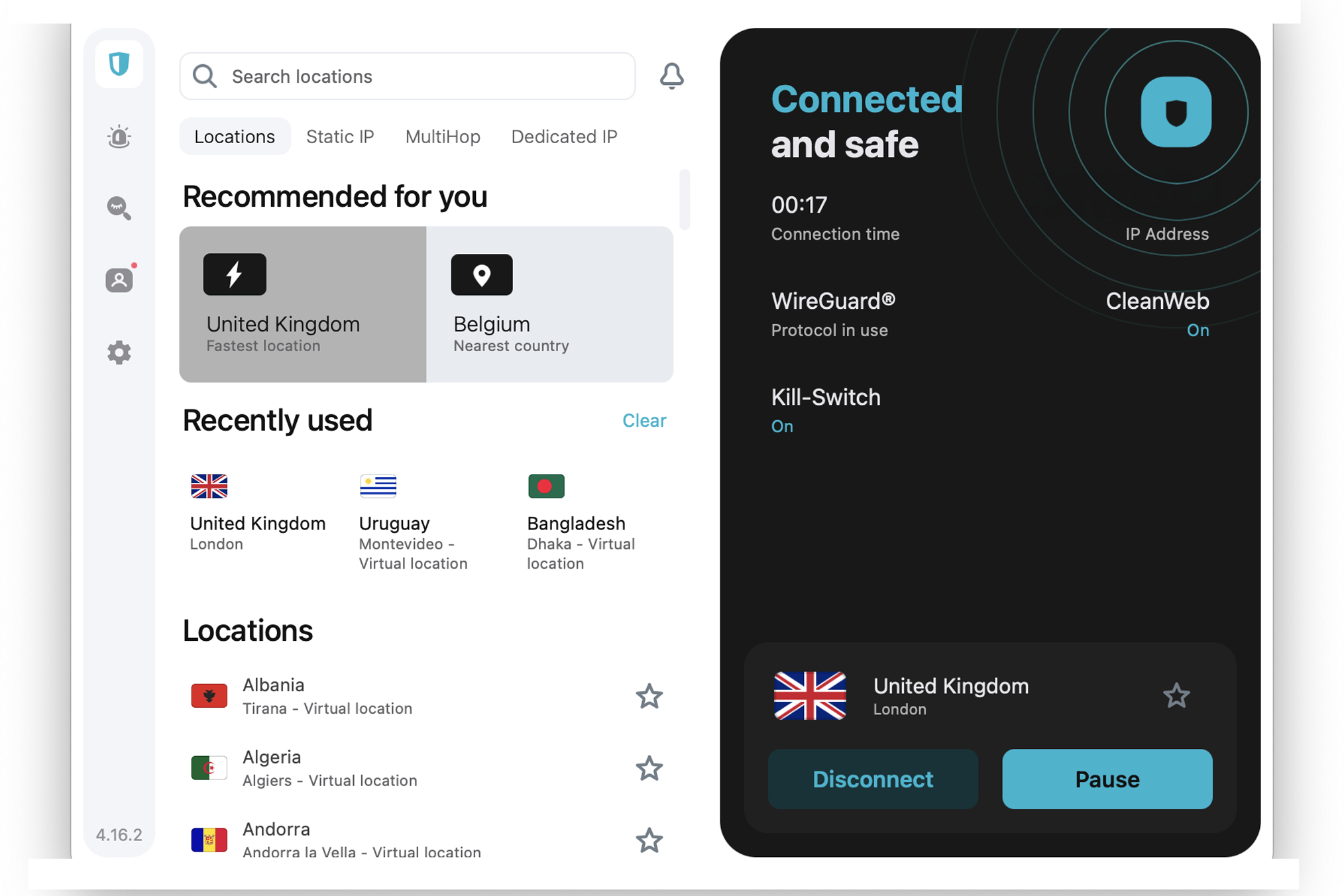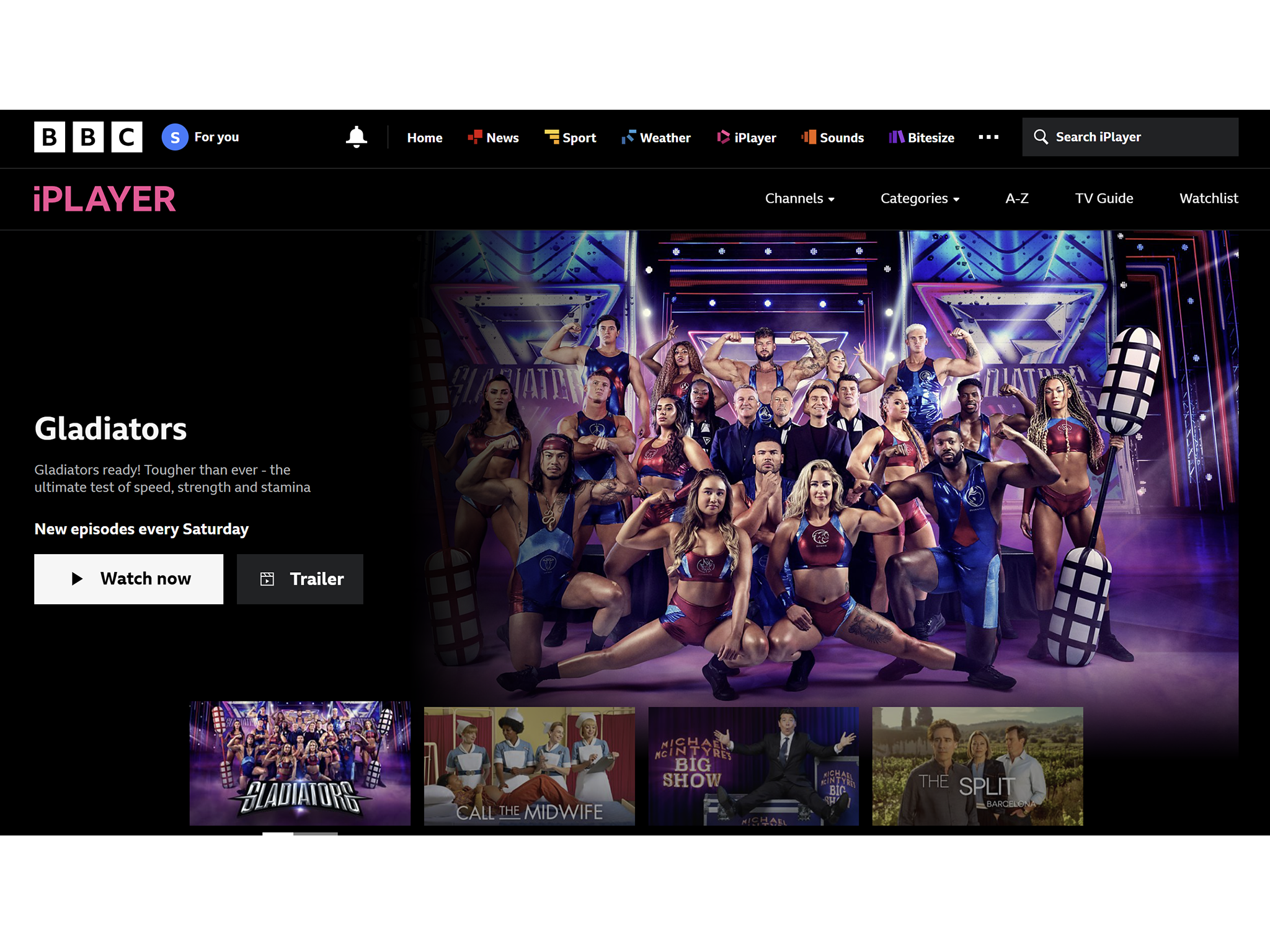
More people than ever are using VPNs, whether it’s to improve security on public wi-fi networks, maintain normal internet service when travelling, or access restricted content in certain countries. As the types of people using VPNs change, so are the VPN services themselves. In recent years, more user-friendly VPNs have taken the lead – and the popular Surfshark VPN has emerged as one of them.
Launched in 2018, Surfshark VPN now has more than 3,200 servers in 100 different countries and has since released other products, such as Surfshark Alert and Surfshark Search – a personal data detection tool and a pared-back search tool, minus the ads, tracking and logging seen on Google.
Surfshark recently moved its base from the British Virgin Islands to the Netherlands. Both countries have no data retention laws, meaning Surfshark isn’t required to store any of your data – something it backs up in its no-logs claim. It’s one of the very few VPN providers that give subscribers an unlimited number of simultaneous device connections, and it’s pretty secure to boot.
How we tested
To review Surfshark, we tested it on a variety of devices for months, measuring the speed of the servers and checking compatibility with streaming services like Netflix, Prime Video and Disney+. We carried out deep research into the VPN’s security credentials and extra features and compared the cost of a subscription to similarly featured VPNs.
Why you can trust us
Alex Lee has more than eight years of experience testing and writing about tech and cybersecurity – including VPNs, so he knows what makes a service worth your time and money. He’s personally used VPNs to keep his online activity private, so he understands which features actually matter. His review of Surfshark is a result of hands-on testing, detailed research and key essentials such as speed, security and pricing.
Surfshark VPN

Price
Surfshark has three price tiers to choose from: starter, one and one+. The prices change pretty much every day to keep up with the competition but hover around the same ballpark. At the time of writing, a 24-month subscription to the Starter tier costs £45.63, which works out to £1.69 a month. If that sounds like too much of a commitment, a twelve-month subscription costs £38.85 (which is about £2.59 a month), while a regular one-month subscription will cost you £12.29 a month.
The month-by-month plan is pretty pricey, costing more than both NordVPN and ExpressVPN. But, the six-month plan and 24-month plan are both competitively priced – being one of the cheapest providers when it comes to VPN subscriptions at these price tiers. You can pay via credit card, Apple Pay, PayPal, Google Pay, Amazon Pay, or even crypto – for those who are extra vigilant about their financial privacy.
Surfshark offers a seven-day free trial on the iOS and Android app, but it doesn’t offer one for desktop applications. What it does is give you a risk-free 30-day money-back guarantee if you’re not satisfied. Essentially, when your 30 days are nearly up, you can email Surfshark’s support team or log on to the live chat and request a refund and a cancellation, and you’ll get your money back, no questions asked. It’s a little bit of a hassle – especially if you just want to try the VPN out.

You can also optionally add a subscription to Surfshark Search, Surfshark Antivirus, Surfshark Alert and Alternative ID. Search is like a Google search engine, without the ads or logs and just the organic results. The provider calls it “the real incognito mode”. Surfshark Alert sends you a notification if your email is found in a data leak, giving you the heads-up to change your password for that specific account. Antivirus is what it suggests, a lightweight monitor for avoiding and removing viruses. Alternative ID creates a full set of fake personal information, with an email address and phone number, to use while browsing sites you don’t trust with your data.
We don’t know if we’ve been indoctrinated too far into Google’s ecosystem, but we missed the news carousels and the frequently asked questions inside Google search. That said, Surfshark Search isn’t really supposed to give you all those bells and whistles of a traditional search engine – it’s for private searching, with unbiased organic results.
The biggest perk of Surfshark is that it’s not only cheap, but it’s available on a smorgasbord of operating systems, including Android TV and Fire TV. Better yet, it supports an unlimited number of devices, so you’ll be able to connect to Surfshark on as many platforms as you like. It’s a big bonus when you compare it to NordVPN’s six devices or ExpressVPN’s five.
Privacy
Surfshark contains all the standard privacy features you’d expect from a half-decent VPN, as well as a few neat extras. It uses AES 256-bit encryption, dubbed military-grade, and masks your DNS and IP address, so you know your data won’t be leaked when you’re connected to the VPN. We ran a series of privacy tests while connected to differing Surfshark servers to sense-check the company’s claims using IPleak.net and DNSLeakTest. We found that Surfshark was indeed obscuring our identity.
It uses the fast WireGuard protocol as the recommended default, but you can switch over to OpenVPN or IKEv2 if you so prefer. If you connect using the OpenVPN protocol, obfuscation will automatically kick into effect (something Surfshark calls camouflage mode). It hides all traces that you’re connected to a VPN.
There’s an in-built kill switch, but it isn’t turned on by default, so you’ll have to manually toggle it on in the settings. A kill switch blocks your device from accessing the internet if your connection drops, acting as the final line of defence so that your data is never exposed.
One really interesting security measure is that Surfshark utilises purely RAM-based servers, which essentially means that no data can be physically taken as with hard drive servers, and all data can be wiped remotely if necessary. It’s something that not a lot of VPN providers have switched over to just yet.
Surfshark also has a similar feature to NordVPN’s Double VPN, which routes your traffic through two different servers for extra security. Surfshark calls this “multi-hop”, and you can select from a range of different servers to route your traffic through two different servers. It’s available on both mobile and desktop applications and comes in the same list-based interface as the single servers.
There’s also a handy split-tunnelling feature – Surfshark calls this feature Whitelister, which is actually a more accurate name for split-tunnelling if you ask us. But you can only access this on Windows and Android. What this does is exclude an application or a website from using the VPN, so your speeds won’t be throttled if you’re playing a game, for example. Annoyingly, it’s not available on Mac or iOS devices.
Surfshark also has a CleanWeb option – said to “block annoying ads and trackers” to save network data. But, when testing, we were still getting ads all over the internet. It does say it stops adware and malware, but we didn’t test the veracity of this.
Logging
A no-logs policy simply means that a VPN doesn’t store any data about your activity while using it. This also means that, if Surfshark were compelled by a court to hand over data about its users, it would have no data to share. Surfshark’s no-logs policy was independently audited by Deloitte in 2022 – the results of which are freely available to view on-site – and was found to be in respect of the VPN’s claims.
The fact that Surfshark uses RAM-only servers should also put your mind at ease. RAM-only servers can be wiped as frequently as the provider likes, meaning any traces of your data won’t fall into the hands of any bad actors.
Performance and speed
When we had previously tested Surfshark, we found it a little sluggish. But, it’s finally caught up. Using the WireGuard protocol, Surfshark’s UK servers only dropped download speeds by around five per cent, and even servers further afield saw just an 11 per cent drop. Streaming UK content on Disney+, iPlayer and Disney+ was seamless, with no buffering or lag.
It’s also one of the nicest VPNs in terms of simplicity. There’s a neat alphabetical server list on the left and a button for quickly connecting static IP addresses and multi-hop servers.
We also tried out the browser plugins for both Chrome and Firefox, and they work exactly like the desktop apps – although you won’t get access to the kill switch or the Whitelister. The extension appears in the top corner, just like any other plugin you’ve installed. If you can, we’d recommend using the desktop application, however.
Streaming Netflix, Prime Video, Disney+ and Hulu
Using a VPN to access region-exclusive shows and movies isn’t illegal, but it’s typically in breach of the streaming platform’s terms of service and could see your subscription terminated. That said, it’s important that you’re still able to access things like Netflix, Prime Video, Disney+ and iPlayer in your own country as usual while connected to your VPN, or access your streaming services at home while travelling abroad.
Surfshark performed admirably in our Netflix test on desktop, iOS and Android across all the UK servers. We didn’t experience any buffering issues either which was a nice bonus. It performed similarly well on Disney+, where we could access the platform without any issues.

You can watch Prime Video using Surfshark, but you will need an Amazon Prime account in the appropriate location since accounts are tied to regions through billing information. If your account is UK-based and you try to access Prime Video from New York, for example, Amazon will flag you as travelling in the US and you’ll either see limited content or be redirected to the UK site.
iOS and Android
In terms of mobile apps, we found the Android app to be a lot better than the iOS app. Like the Mac app, there’s no split-tunnelling feature on iOS, but the Android app is packed with features.
Your phone’s GPS can give away your true location, so the Surfshark Android app gives you the option to spoof a GPS location that correlates with the VPN you’re using. You also get the option to turn on small data packets, which can improve connection speeds.
We like the GPS spoofing feature in theory. It’s a feature we don’t really come across. But using it was a different story, however. Attempting to spoof our location on geo-based games, such as Pokémon Go (which goes against the terms of service and could get you banned) resulted in a GPS error, so we aren’t sure how effective it really is.
Buy now £1.79, Surfshark.com
FAQs
How to set up Surfshark VPN on the Amazon Fire TV Stick
Setting up Surfshark on the Fire TV Stick is straightforward. First, make sure that your subscription is active, then search for Surfshark using the Fire TV Stick’s main menu. Download the app to install it, then open the app and enter your login details.
Once connected, your Fire TV Stick traffic will be encrypted and routed through the VPN server you’ve chosen, allowing you to stream your content privately and securely. You can find a full guide on the Surfshark website.
How to set up Surfshark VPN as a browser extension
You can run Surfshark VPN as a browser extension in Chrome, Firefox and Edge – this is handy if you can’t install software on your PC or Mac. To get the extension, visit the Surfshark website and navigate to the browser extensions section. Find your preferred browser and add the extension from there.
The Surfshark extension icon should appear in the top right of your browser window. If not, you’ll find it under the “extensions” section of your browser’s menu. Click it, log in, connect to a server, and your browser traffic will be routed through the VPN server of your choosing.
The verdict: Surfshark VPN
For such a low price and the perk of unlimited simultaneous devices, Surfshark is one of the best VPNs around. The user interface is nice and approachable, it works with all the major streaming services and has the security chops to back it up thanks to those RAM-only servers. There’s a nice big emphasis on multi-hop in the interface which was nice.
While speeds are a little slower than we’d like, with pages sometimes taking a long time to load, our experience when streaming content wasn’t hindered. We didn’t experience any buffering issues at all when accessing US servers.
Android and Windows users are definitely getting the better deal in terms of Surfshark’s feature set, gaining access to the Whitelister and things like GPS spoofing and small packets, but it works reliably no matter what OS you’re accessing the VPN on. With such an affordable price tag, we’d recommend Surfshark to anyone looking for a simple, no-nonsense VPN that does the job of accessing region-locked content.







